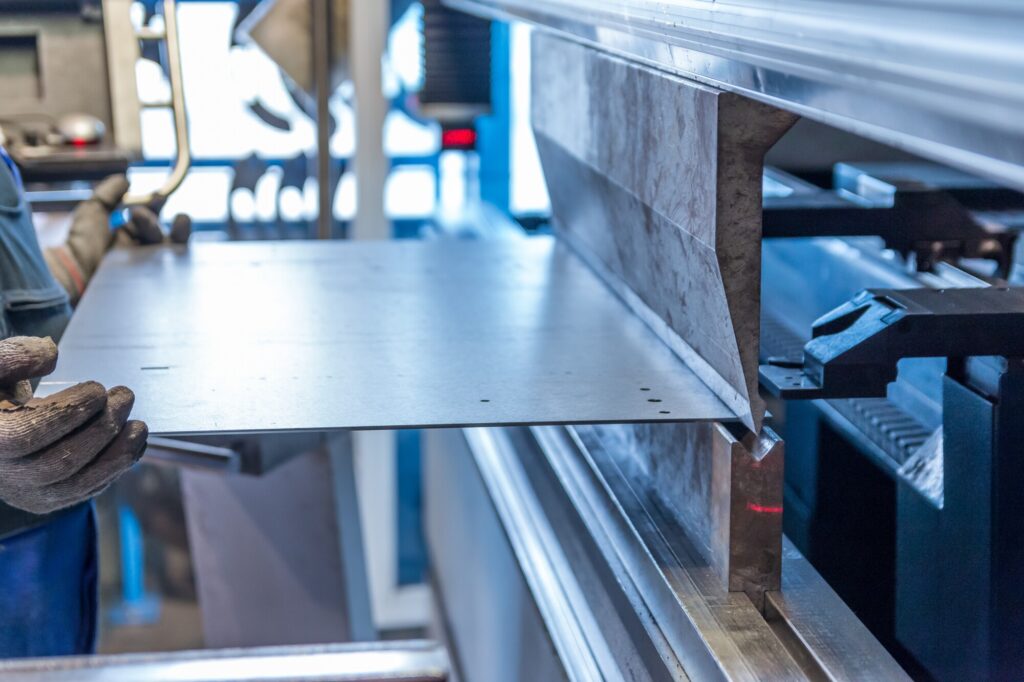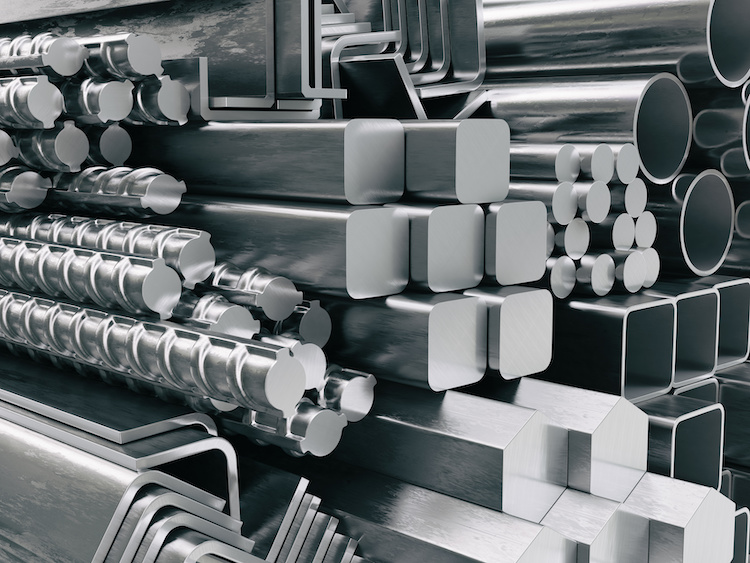Comprehensive Steel Fixing Services for Construction Projects
Comprehensive Steel Fixing Services for Construction Projects
Blog Article
Comprehensive Analysis of Cutting-Edge Techniques in Steel Construction Sector
As the steel fabrication sector remains to progress, the combination of cutting-edge methods has become essential for staying affordable and satisfying the needs of modern manufacturing criteria. From laser reducing advancements to the utilization of robotics and 3D printing in steel production, the landscape of construction strategies is quickly altering. With each advancement bringing its very own collection of benefits and obstacles, a comprehensive analysis of these methods is vital for companies intending to streamline their procedures, improve precision, and eventually, boost the high quality of their steel fabrication outcome. In this vibrant sector where technology plays a crucial function, recognizing the nuances of these sophisticated strategies is not simply a choice yet a requirement for those aiming to create in advance in the ever-evolving world of steel manufacture.
Laser Reducing Advancements
In the realm of steel fabrication, laser cutting innovations have actually transformed the accuracy and efficiency of metal shaping procedures. By harnessing the power of focused laser beams, producers can now accomplish unrivaled levels of accuracy when cutting via numerous kinds of metals. This modern technology makes it possible for detailed styles to be carried out with very little product wastage, making it a cost-effective remedy for sectors needing high precision elements.
One of the essential benefits of laser cutting is its capacity to handle a large range of materials, including stainless-steel, light weight aluminum, and carbon steel, with simplicity. The procedure creates tidy, burr-free sides, eliminating the demand for extra ending up actions. Furthermore, the non-contact nature of laser reducing reduces the risk of product contamination, causing greater quality end products.
In addition, laser cutting devices can be set to make swift, precise cuts, dramatically minimizing production time compared to standard reducing approaches. This speed and precision make laser cutting especially suitable for mass production settings where performance is vital. As innovation remains to advancement, laser cutting is positioned to play a progressively important function in the steel construction market.

CNC Machining Innovations
The advancement of CNC machining technologies has actually ushered in a new era of accuracy and effectiveness in the steel manufacture industry. Computer System Numerical Control (CNC) equipments have reinvented steel manufacture by using unparalleled accuracy and repeatability in the manufacturing procedure. metal fabrication melbourne. One of the essential technologies in CNC machining is the assimilation of advanced software program systems that allow real-time tracking and modifications, leading to enhanced productivity and quality assurance
Additionally, the growth of multi-axis CNC equipments has permitted the fabrication of complicated steel components with complex styles that were previously challenging to create. These machines can execute a vast range of machining procedures, including milling, drilling, transforming, and grinding, all with high levels of accuracy.
Moreover, the incorporation of automation and robotics in CNC machining has streamlined manufacturing procedures, minimized lead times, and minimized the margin of error. This integration of sophisticated innovations not just increases efficiency yet also makes certain consistent quality throughout all fabricated steel parts. In conclusion, CNC machining developments continue to drive improvements in the steel fabrication sector, establishing new requirements for precision and productivity.
Automated Welding Technologies
Automated welding innovations have revolutionized the steel manufacture industry, enhancing performance and accuracy in the welding procedure. These sophisticated innovations make use of computer-controlled systems to automate the welding process, resulting in higher productivity degrees and boosted weld top quality. One of the key advantages of automated welding is the ability to perform complicated welds with constant accuracy, minimizing the likelihood of errors and remodel.
Robotic welding systems are at the center of automated welding modern technologies, providing exceptional rate and precision. These systems can take care of a vast array of welding tasks, from easy to intricate, easily (Alpha reo). By utilizing innovative sensors and software, robotic welders can adapt to variants in product and joint geometry, making certain an attire and reputable weld
In addition, automated welding technologies boost work environment next page safety and security by decreasing the exposure of human welders to hazardous fumes and intense heat. As the steel fabrication industry continues to evolve, incorporating automated welding technologies will be crucial for firms seeking to stay competitive and satisfy the growing demands for top notch bonded products.
Robotics Combination in Construction
Utilizing robotic systems in construction procedures has ended up being a critical technique for boosting effectiveness and precision in contemporary production settings. Robotics integration in steel construction provides a myriad of benefits, including raised productivity, boosted high quality control, and improved precaution. These advanced robot systems are furnished with sophisticated sensing units and programs abilities, permitting them to do intricate tasks with a high level of precision and repeatability.
One of the key advantages of robotics assimilation in steel construction is the capacity to automate repetitive jobs, such as material handling, reducing, welding, and setting up processes. This not only speeds up production cycles but also decreases the danger of human mistake, leading to greater overall item quality. Furthermore, robots useful link can operate 24/7, dramatically improving production output and conference limited job deadlines.

3D Printing in Steel Production
Having reinvented the steel fabrication industry through robotics combination, the burgeoning expedition of 3D printing in steel manufacturing is poised to further advancement the realm of contemporary production strategies. 3D printing, also called additive manufacturing, provides unmatched design freedom and complexity, allowing the development of complex steel structures that were previously unattainable via typical production techniques. By using computer-aided layout (CAD) software application, makers can precisely manage the layer-by-layer deposition of steel material, causing components with boosted geometries and performances.
One of the vital advantages of 3D printing in steel production is its ability to lower product waste considerably. Unlike subtractive manufacturing processes where excess material is cut away, 3D printing only uses the necessary amount of steel required for the final component. This efficiency not just causes cost savings yet additionally aligns with lasting manufacturing methods by reducing environmental impact.
Furthermore, 3D printing makes it possible for rapid prototyping and personalization, permitting the production of tiny sets of complex steel parts with short lead times. As the modern technology continues to mature and end up being extra accessible, its combination into mainstream steel fabrication processes is expected to drive technology and effectiveness across the sector.
Final Thought
Finally, the steel fabrication industry has seen substantial advancements in strategies such as laser cutting, CNC machining, automated welding, robotics combination, and 3D printing. These advanced innovations have revolutionized the means steel products are manufactured, resulting in increased cost-effectiveness, performance, and precision. Proceeded investment in these cutting-edge techniques is crucial for the sector to remain competitive and satisfy the demands of modern-day production processes.
As the steel fabrication sector proceeds to progress, the integration of sophisticated techniques has actually ended up being vital for staying affordable and fulfilling the demands of modern production standards.One of the crucial benefits of laser cutting is its capability to handle a broad variety of materials, consisting of stainless steel, light weight aluminum, and carbon steel, with convenience.Automated welding technologies have click here now changed the steel manufacture industry, boosting performance and accuracy in the welding process.Having actually revolutionized the steel construction market through robotics integration, the blossoming exploration of 3D printing in steel manufacturing is positioned to more advance the world of modern manufacturing methods.In final thought, the steel construction market has actually seen significant improvements in techniques such as laser cutting, CNC machining, automated welding, robotics integration, and 3D printing.
Report this page